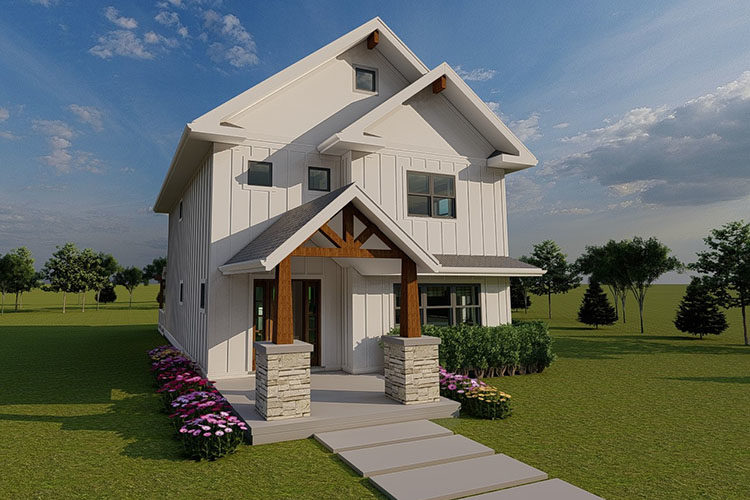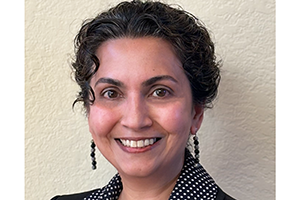Built in Milwaukee for Milwaukee.
That’s the goal of the joint entry in this year’s Solar Decathlon from UWM and UW-Madison.
The U.S. Department of Energy sponsors the decathlon competition for architectural designs that are energy efficient. As they have for the past six years, UWM architecture students are partnering with mechanical engineering students at UW-Madison on their entry.
The team has chosen to enter the urban single-family house category, and is submitting a design for a house that the City of Milwaukee could use, according to architecture student Joe Peletis, who designed the house selected for this year’s entry.
“Milwaukee is trying to solve the problem of lots of vacant lots around the city,” Peletis said. “We’re trying to give them a solution that they can use on any of those vacant lots.”
Specifically for Milwaukee
What makes this house different from previous Solar Decathlon entries is that it’s designed specifically for the city of Milwaukee, added Cara Walls. She is one of the nine UWM architecture students working with 11 UW-Madison mechanical engineering students on the project.
“We designed it so it could be pre-manufactured, so it would be less expensive for the city,” she said. “With that comes a certain adaptability, so that this house can fit on different lots and different orientations. That’s a big part of this project.”
This year’s Solar Decathlon Design Challenge, which will be held April 16-18 in Golden, Colorado, will once again be virtual because of the pandemic.
The UWM-UW-Madison team has been chosen as one of 61 finalists and will present its design with a written report and a 20-minute video submitted to national reviewers before the event. Architecture Professor Mark Keane is working with the UWM group, UW-Madison engineering lecturer Mike Cheadle with the Madison students.
Learning each other’s profession
The collaboration is a good learning experience for both the architecture and engineering students on the team, Keane said, giving both groups a chance to learn more about the other profession’s approach to saving energy.
“The Solar Decathlon project brought a lot of the real-world perspective into my engineering-built mind,” said Tyler Neutgens, one of the UW-Madison engineering students. “The knowledge I got through this project was more than the basics of building a home but also the organization, communication and responsibility that comes with any given project. ”
The goal of the competition is to create sustainable homes that fight climate change by reducing energy consumption, Keane said.
The UWM-UW-Madison entry is a three-bedroom, 2,000-square-foot house with two bathrooms, natural wood finishes, rich white millwork and energy saving light fixtures that can be managed with a smartphone. Energy saving features include R-50 insulation and a pre-installed photovoltaic system to collect solar energy.
Energy efficiency is increasingly necessary as people become more environmentally conscious, and is becoming an important part of code compliance, Peletis said. At the same time, he added, “we wanted the house to be aesthetically pleasing and comfortable.”
The students researched other Milwaukee housing to find a style that would be modern but still would fit into the community, Walls said. “We didn’t want it to look like a super random house placed there.”
Prefab housing can be appealing
Designing a house that could be pre-manufactured in four parts, then put in place on the site, was an important consideration for the team. “If pieces are done in the factory, it can go together rather quickly,” Peletis said. “It also reduces construction waste.”
Another goal of the design is to make such modular housing more appealing, overcoming some stigmas attached to it, Walls said. “We wanted a house that people would want to live in that had curb appeal.”
If the city is able to get funding, a house based on the design could be built in the Josey Heights/Walnut Circle area, according to Walls. Another step would be development of a facility to build the premanufactured housing, possibly in the 30th Street Corridor.
The students have been working closely with local government, joining the City-County Task Force on Climate and Economic Equity. The hope, said Walls, is that as money becomes available through future green infrastructure funding, that funding might help pay for some of those housing projects.
Architecture classes and the decathlon are also working closely with the City’s Department of Sustainability on an entry to the Bloomberg Million Dollar challenge, which will award $1million to 15 cities for innovative projects.
The faculty at UWM and UW-Madison are always interested in finding clients interested in building zero net energy homes in the near future. For more information, contact Keane at keane@uwm.edu.








